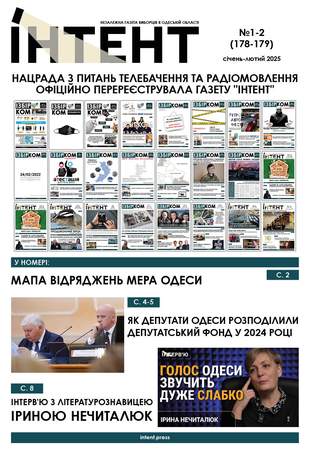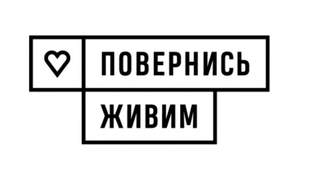Меню
Social networks
April 24, 2025, 10:27 p.m.
Tyahyn Fortress Excavations Reveal 15th-Century
Цей матеріал також доступний українською118
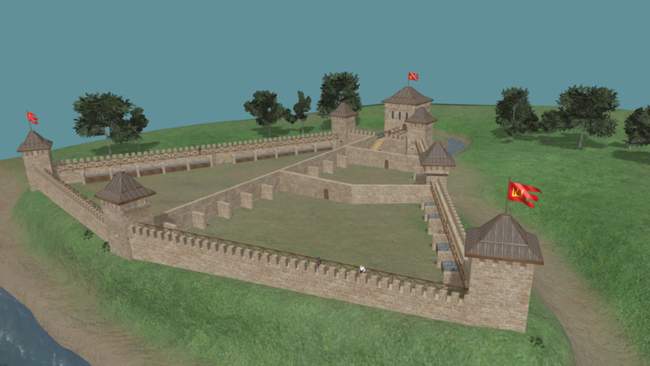
Graphic reconstruction of the fortress. Photo courtesy of the interviewee
This monument of national importance became publicly known in 2016. That's when the Southern Medieval Expedition of the Institute of Archeology of the National Academy of Sciences of Ukraine began excavations on the territory of the Tyahyn community in Kherson region. Six seasons and more than 200 participants later, the result is two monographs, a 3D model of the fortress, and the Tyahyn Fortress virtual museum, which features about 100 digitized finds.
"This history of southern Ukraine, which scientifically proves the European, not Russian, vector of development, has long been silenced and hidden," says Natalia Bimbirayte, director of the IRC Legal Space NGO and chairman of the board of the Ukraine-Lithuania Cultural Center, in an exclusive interview with Intent.
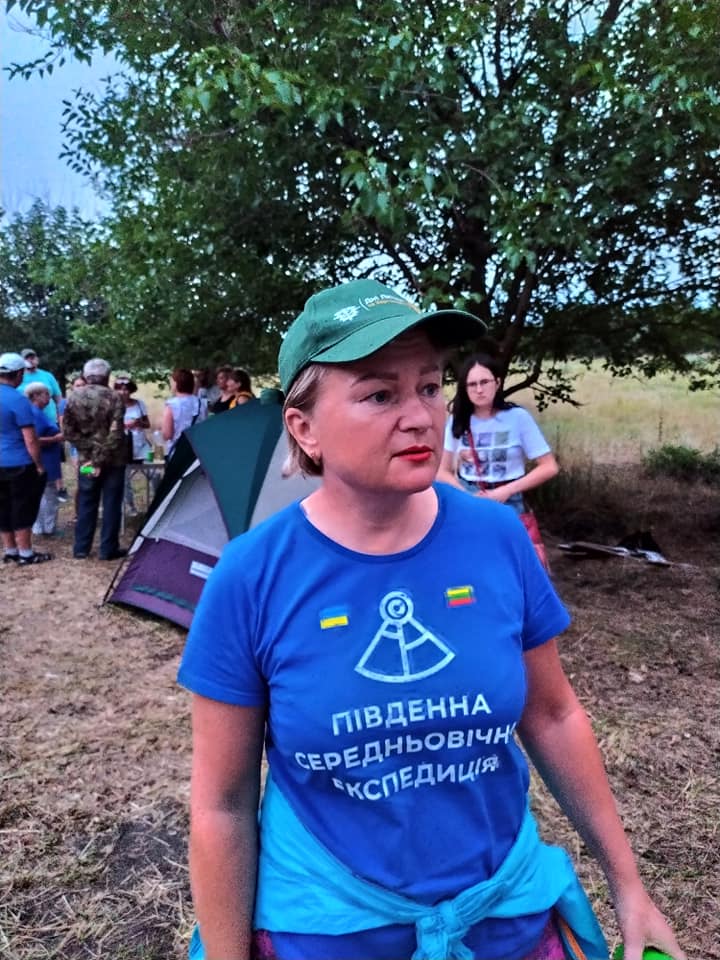
Natalia Bimbirayte.
What is the first thing to understand about the Tiahynia Fortress?
The Tyahyn Fortress is an archaeological monument of national importance that belongs to a little-known period of the development of Ukrainian civilization in the late 14th and early 15th centuries. It is located on the right bank of the Dnipro River on the territory of the Tyahyn community in Kherson Oblast. The location was not chosen in vain, but strategically, because the Tyahynka River flows into the Dnipro River nearby. This, in fact, played a very important role in the Middle Ages for the fortress.
The building itself is made of stone, built of local limestone. It has an area of 0.73 hectares and a triangular shape, the so-called Constantinople type. It is located on a fairly large plateau, the Velyke Horodyshche island, which has an area of 18 hectares. The fortress was a part of the fortification lines along the Black Sea coast, which were built by the Grand Duke of Lithuania Vytautas. In other words, these were the southern borders of the then Grand Duchy of Lithuania.
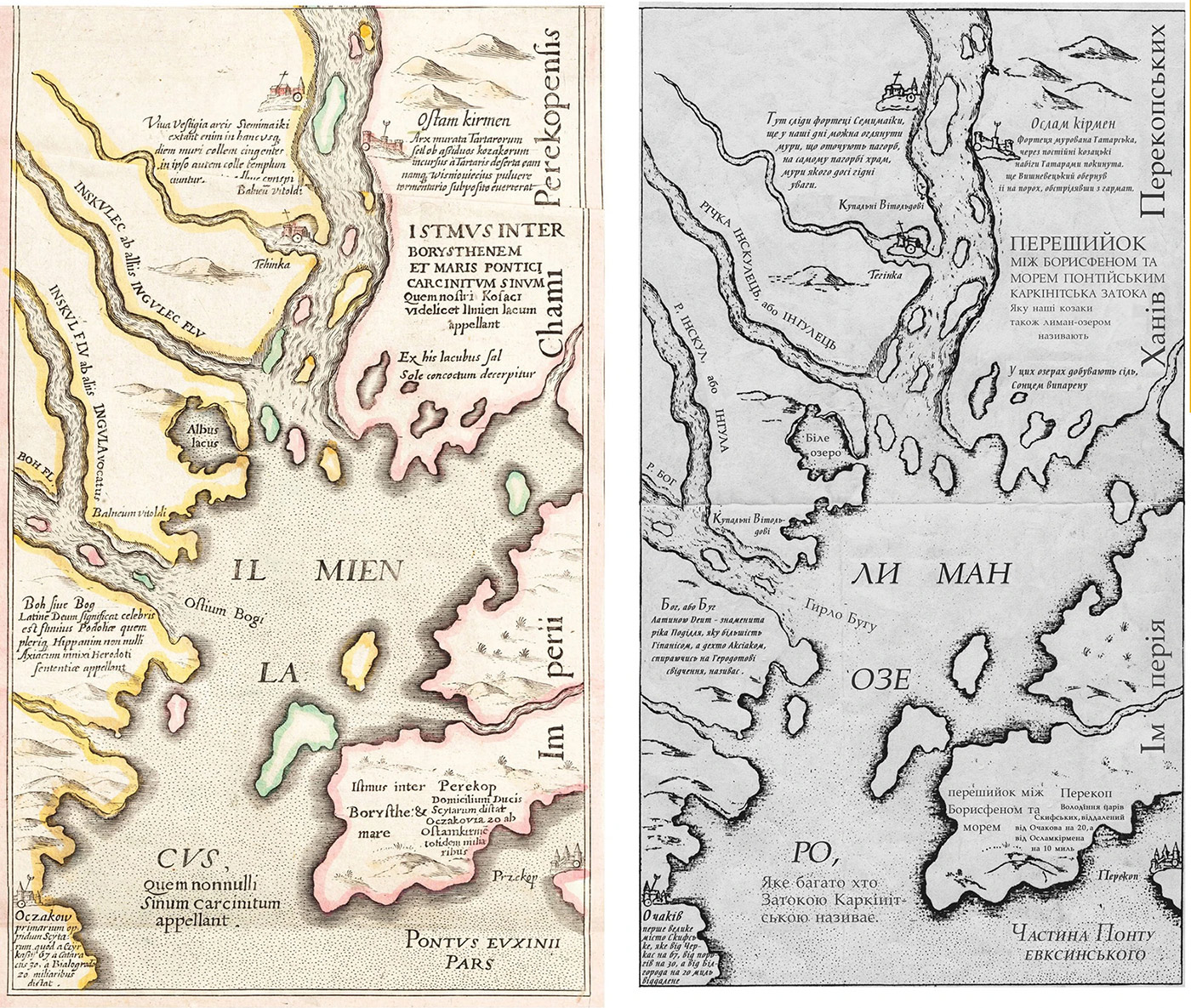
Tyahynka on the map of Radziwill in 1613
This means that the history of southern Ukraine developed under the influence of European civilization, not Russian, thereby destroying the narratives of their propaganda. And Russia itself did not exist at that time. This is a factual constant. I would only note that time in archaeology is dated by the artifacts found, that is, the confirmation or refutation of any historical information is based solely on material culture. That is why archaeology is a powerful science, and its arguments are statutory.
What is the first information about the existence of the monument?
The first known researcher of the fortress was Viktor Hoshkevych. He was a Kherson local historian, archaeologist, scientist, and founder of the Kherson Museum of Antiquities (now the Kherson Regional Museum of Local Lore - ed.)
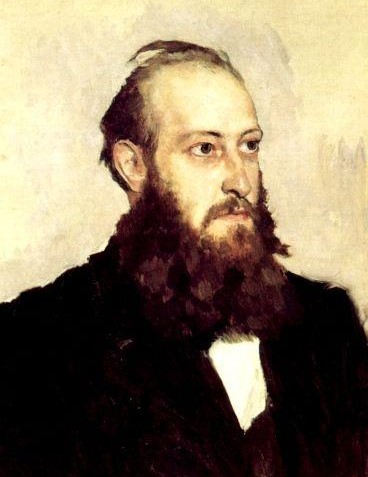
Viktor Hoshkevych. Portrait by Vasnetsov
In 1914, he began excavations and did a lot. At that time, he unearthed a donjon, walls, and foundations. Many unique finds dating back to the late fourteenth and early fifteenth centuries were found separately. Viktor Ivanovych was the first to call this fortress a Lithuanian fortress.
Viktor Hoshkevych and his secretary Iryna Fabrycius described all their work very well in publications that have survived to this day. Among them is the first scheme of the fortress. To be more precise, only half of it, because as it turned out later, it was twice as large.
In the twentieth century, around 1970-1980, fragmentary research was conducted at the settlement and fortress. However, these expeditions did not yield any great results or substantial reports, or they simply did not remain.
Can we say that the existence of the fortress as a monument has been hushed up for a long time?
That's exactly what happened. This began to happen during the work of Viktor Hoshkevych. His publications indicate that the walls have survived up to three meters. But they came down to us in a completely different form. Because the tsarist Russian authorities of the time were not interested in preserving the monument and allowed the inhabitants to use the fortress for their own economic needs. Most of the sheds, walls, and other household buildings in the village of Tyahyn were built from dismantled stone from the fortress. This is such a vivid attitude to history.
Hoshkevych also complained to his friend Volodymyr Kedrovsky, as documented in the reports, that highly respected scholars and various officials came from Moscow and St. Petersburg to take away his most valuable finds from various excavations. Later, these artifacts disappeared without a trace. Because of this, Viktor Ivanovych began to hide the exhibits, and eventually his activities were suppressed by the current government.
Volodymyr Kedrovsky (b. August 13, 1890 in Kherson - d. March 13, 1970, Metuchen, New Jersey, USA) was a statesman and politician, publicist, colonel of the UPR Army. Head of the State Inspectorate of the UPR Army.
This topic was taboo in Soviet times as well. Why do we know so little about medieval monuments in southern Ukraine and why do we say that the Tyahyn fortress is a little-known story?
Because the period from the late fourteenth to the early eighteenth centuries was one that the Russians tried to hide and close, to physically erase from our memory. The true history of these territories contradicts the one they tell in their textbooks and which they have been imposing on us for so long.
Catherine II and Hryhoriy Potemkin did not bring civilization here, but came with an occupation, looting and destroying the achievements of the local population. For example, during the excavations in Tyahyn, there was no cultural layer of Russians at all. All of the Russian artifacts found are of military origin dating back to the eighteenth century.
Buttons from overcoats and weapons are all that remains of them in these territories. That is why excavations and research in southern Ukraine were very undesirable, and it is not for nothing that the work of the Southern Medieval Expedition of the Institute of Archeology of the National Academy of Sciences of Ukraine made the Russian side so nervous.
Returning to modern research. When did the fortress become known at the national and international levels?
We received the most information about Tyahyn from the work of the Southern Medieval Expedition of the Institute of Archeology of the National Academy of Sciences of Ukraine. It lasted for six seasons, from 2016 to 2021, and in the last year the expedition was expanded to an international level.
The excavations were led by a well-known Ukrainian archaeologist, Doctor of Historical Sciences Svitlana Bilyaeva, and I acted as a manager. The expedition was not funded at all by the state or the budgets of other levels of government. It was organized by volunteers and funded by patrons who simply love history and Ukraine. Imagine, this is the help of more than 200 people. We even named our community "People of Tyahynya". And of course, we planned to continue this activity, but the full-scale invasion prevented it.
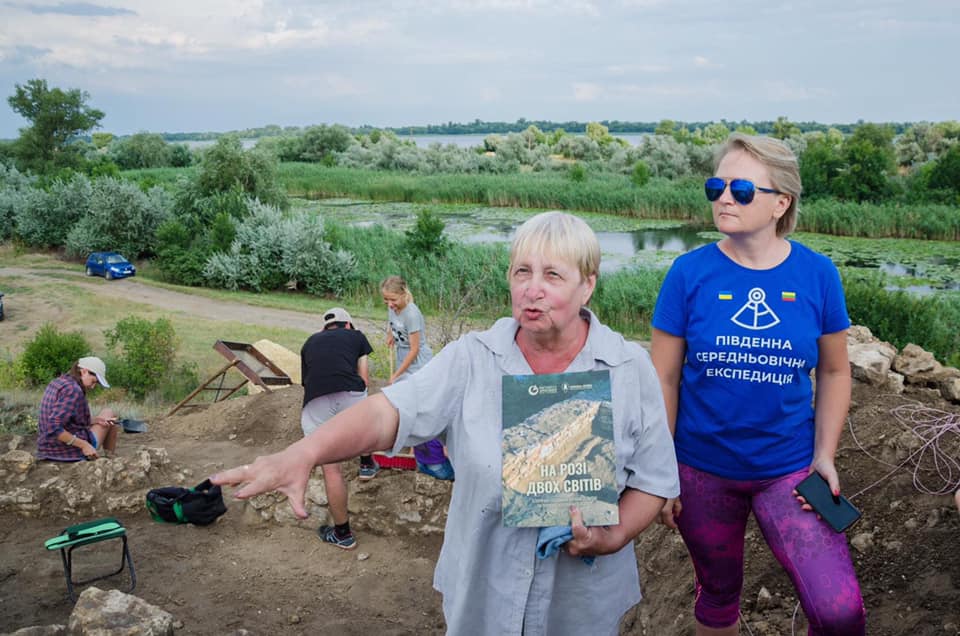
Svitlana Bilyaeva and Natalia Bimbirayte
Fortunately, we managed to do a lot before 2022. In addition, we were excavating from the other, opposite side, where Viktor Hoshkevych was digging. And our work, let's say, shed light on many points, including the structure of the building and the size of the fortress walls.
In particular, in 2018, we opened the maximum number of squares, which included excavations of the outer wall and inner walls of the fortress. In the same year, with a grant from the Lithuanian Ministry of Foreign Affairs, we conducted topographic and geodetic surveys, establishing the size of the fortress, and using aerial photography to map the fortress.
Also, using bathymetric (underwater - ed.) surveys, we examined the coast of the Tyahynka River around the settlement, near the fortress, and at its confluence with the Dnipro, during which we found the remains of two marinas and a flooded tower. The results can be seen in a graphic reconstruction - a 3D model of the Tyahyn fortress.

Model of the fortress
We can now say that a few centuries ago the Tyahynka River was much wider and washed around the entire settlement. The plateau itself (a natural embankment) was eight meters above the water level. And one of the towers of the fortress, which was excavated in 2020, according to the conclusions of the architects-volunteers of the expedition, Andrii Lutsyk, Tetiana and Liza Yevseyiev, reached six to nine meters in height and had at least two tiers, and possibly three.
Tell us about the artifacts you found.
Of course, we received a lot of artifacts. And going back to the beginning of the conversation, their list proves the fact that the Tyahyn fortress is a monument of at least three peoples: Ukrainian, Lithuanian, and Crimean Tatar. But there are finds from even more peoples besides Russian.
First, there are tools, costume details, jewelry, and household items such as flint and utensils. I'll focus on the latter, since this is a rather large collection. Clay tableware includes container, kitchen, and table ceramics (jugs, bowls, and plates) covered with yellow, green, and brown glaze and traced patterns (sgraffito ceramics). In addition, fragments of glassware, which was prestigious and expensive at the time, and metal utensils for storing food and cooking for a large number of soldiers in garrisons.
A unique fragment of dishes with an inscription in Cyrillic, covered with gilding, was discovered. This undoubtedly emphasizes the special importance of the fortress owner. No analogues to this sample have been found yet.
Secondly, there are weapons that testify to the presence of Lithuanians. Among them are crossbow bolts and arrowheads, which were characteristic of Lithuanian culture of that period. They were found under the walls inside the fortress, indicating certain defensive measures.
Thirdly, there are architectural details, construction tools, and a collection of coins. An extremely important indicator of the fortress' belonging to the castles of the Grand Duchy of Lithuania is the discovery of a limestone slab with heraldry among the ruins of the monumental building, which reflects signs of belonging to one of the Lithuanian families.
About 30 coins were found, testifying to various contacts: with the Genoese Caffa in the Crimea; with distant Poland - bilon denarii of King Władysław Warnieczik of Krakow (1434-1444); with the Crimean Khanate - coins with the tamga of Mengli Giray of the late fifteenth century.
The iron mace, which could be both a weapon and a kleinode (a sign of authority - ed.) of the highest ranks of society, is noteworthy. It was discovered in 2021, symbolically on the 30th anniversary of Ukraine's independence. Experts date the artifact to the 15th century, making it officially the oldest mace found in the entire Northern Black Sea region.
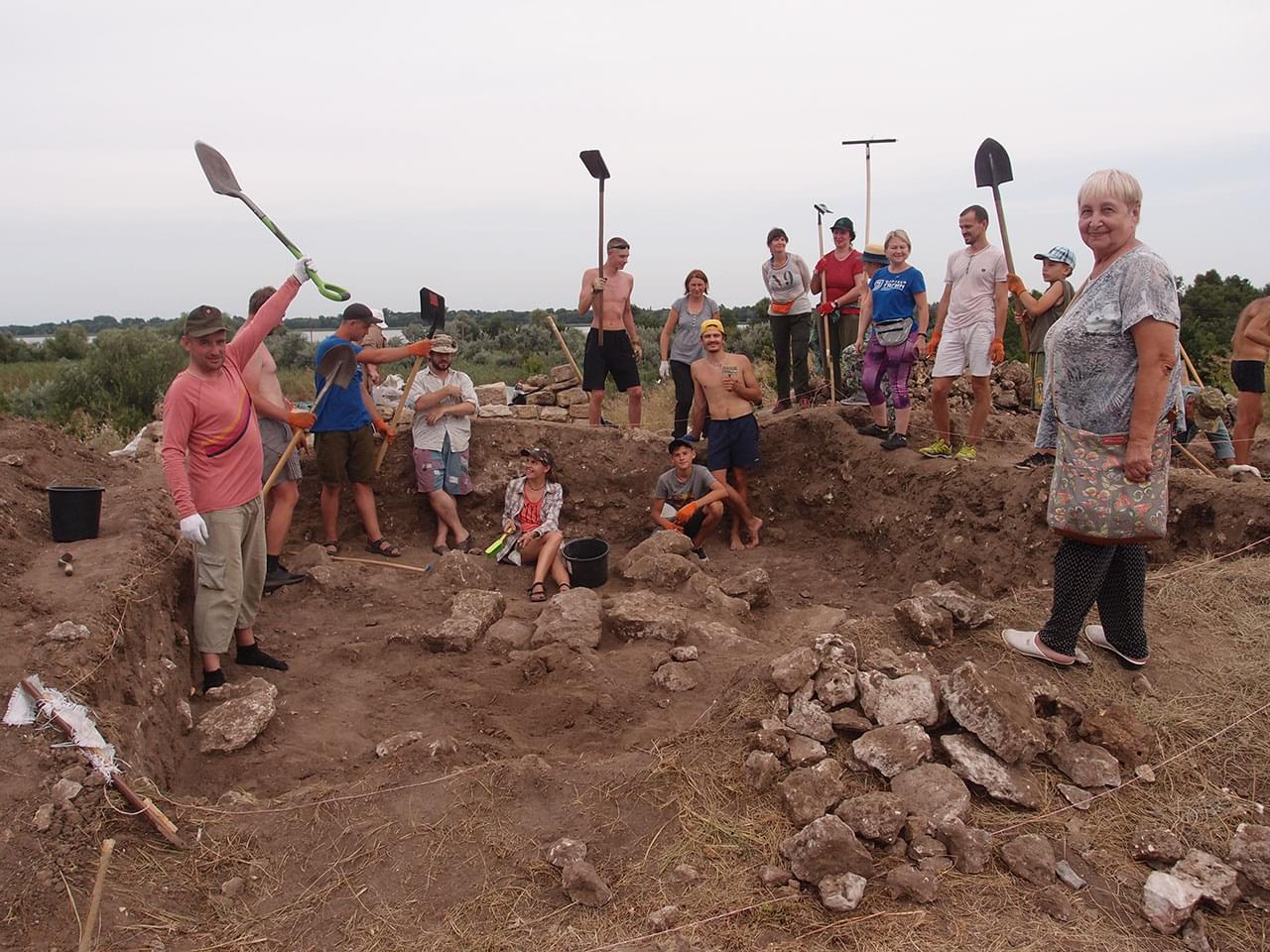
Excavations in 2021
Which artifacts primarily reveal the little-known history of southern Ukraine?
In 2017, two cross-shaped overlays were found on bags or wallets of the time, indicating the presence of Lithuanian subjects. Similar items have been found in large numbers at various sites in Lithuania, dating from the fourteenth to the fifteenth centuries. At the same time, at Tyahyn, the overlays were found in various places, including outside the fortress, about one kilometer apart.
In 2020, a corner tower was discovered with the remains of a bombardment inside. This is an artillery weapon that was used before the advent of cannons and was placed on a wooden floor. There is not enough material, so scientists cannot determine its exact origin, but they are inclined to believe it is European, for example, Genoese or Lithuanian. That is, it was purchased and brought from somewhere.
These facts alone indicate that life during this period was in full swing on the entire Velyke Hordyshche island. Thus, it refutes the established information in historical circles that after the collapse of the Mongol Empire, the formation of the Dzhuchi Ulus in these territories, and its decline in the 60s and 70s of the fourteenth century, the people disappeared.
By the way, Tyagyn was one of the four largest cities of the Juchi Ulus. This also refutes Russian narratives about the so-called Novorossiya and that Catherine II settled the empty southern lands in the eighteenth century.
At the end of the fourteenth and beginning of the fifteenth centuries, construction and trade crafts flourished in southern Ukraine, in Tyahyn. The fortress did not serve solely as a defensive structure, but was also a customs office and a commercial port of international traffic on the way from East to West. Boats came here from the Crimea through the mouth of the Dnipro. I should also add that the high level of civilization is also evidenced by the remains of a ceramic water supply system found in 2016 inside and outside the fortress.
And also, the Tyahyn fortress is a very important monument for us, because it saw the birth of the Ukrainian Cossacks as a class of free people.
Read about how the unique collection of artifacts from the excavations in Tyahyn, now an archaeological site of national importance, which has survived occupation, flooding during the explosion of the Kakhovka hydroelectric power station, numerous shelling by the Russian army, and the modern digital existence of the fortress, in the second part of the interview with Natalia Bimbirayte.
Photo provided by the interviewee.
Яніна Надточа



